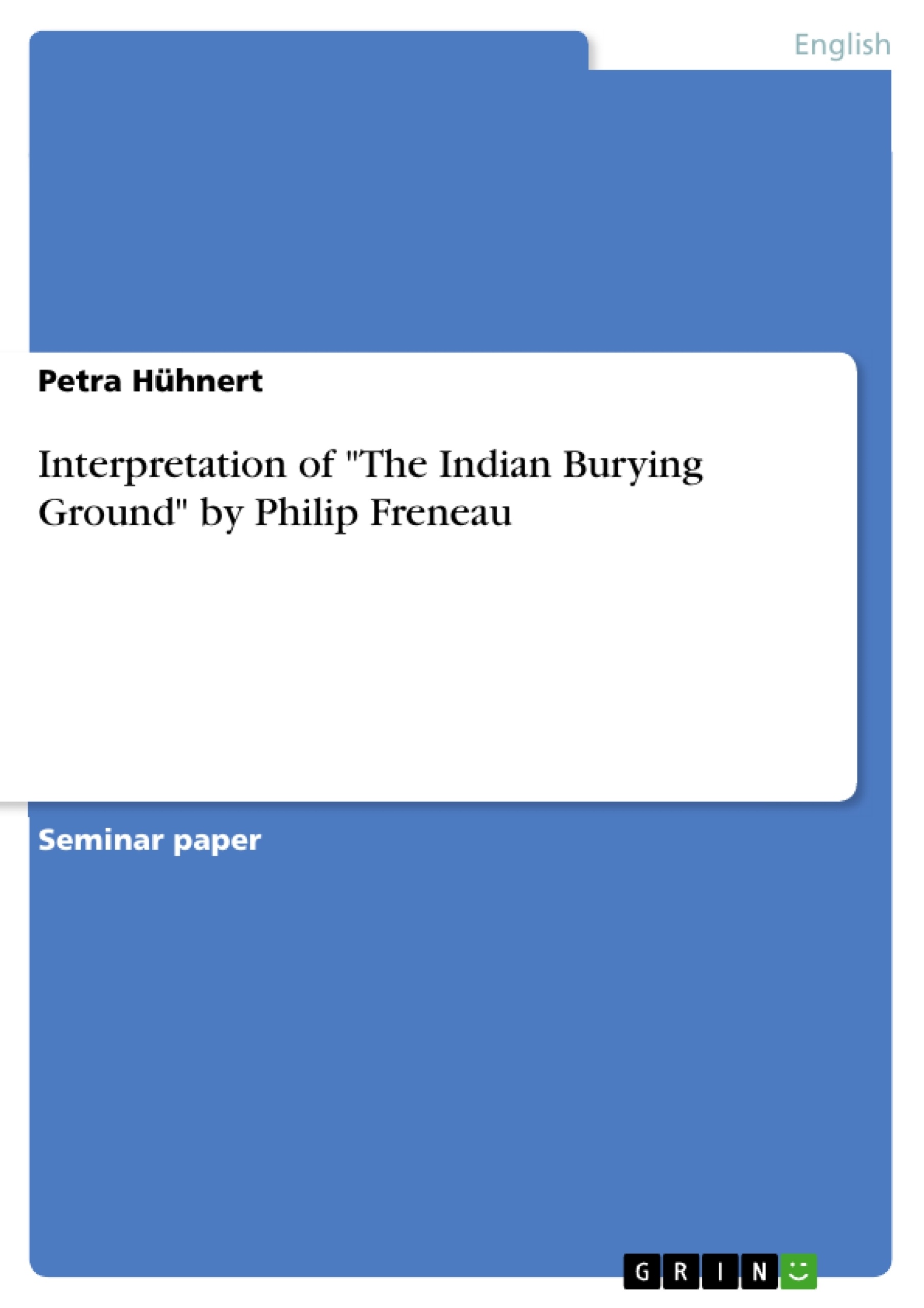Philip Freneau describes in his romantic poem from 1787 “The Indian Burying Ground” the differences between European funeral traditions, influenced by Christianity, and the traditions for funerals of some Native American tribes. He shows in detailed pictures the activity that is still visible in the Native American dead opposing the sleeping posture given to European dead. He also points out how close the Native American way of life and death is to nature in its partially wild and savage way by describing their habits and clothes. Their natural concept of handling life and especially death is here seen as superior to the civilized European world. The European people could have learnt something from the Indians instead of attempting to civilize them according to their ideas and ideals.
Table of Contents
- Introduction to “The Indian Burying Ground” by Philip Freneau
- Short Biography of Philip Freneau
- About the Poem
- Interpretation
- 1st Stanza
- 2nd Stanza
- Closing Statement
Objectives and Key Themes
This poem, written in 1787, explores the differences between European and Native American funeral traditions. Freneau highlights the contrast between the stillness associated with European burials and the active posture of Native American burials, suggesting a connection between Native American life and nature. He argues that European culture could learn from Native American values, particularly regarding death and their connection to nature.
- Cultural differences in funeral traditions
- The role of nature in Native American culture
- The contrasting views of death in European and Native American societies
- The relationship between civilization and natural life
- The importance of understanding and learning from other cultures
Chapter Summaries
The first chapter introduces Freneau's poem "The Indian Burying Ground" and its exploration of the contrasting views of death and burial practices between European and Native American cultures. The second chapter presents a brief biography of Philip Freneau, highlighting his life, education, and involvement in political affairs. The third chapter delves into the poem itself, discussing its historical context, Freneau's poetic style, and the transition from neo-classicism to romanticism in American literature.
Keywords
The poem's main themes and concepts revolve around cultural differences, the natural world, death, and the relationship between civilization and nature. Key terms include: European funeral traditions, Native American burial practices, cultural differences, natural poetry, neo-classical poetry, romanticism, and the connection between life and death.
- Quote paper
- Petra Hühnert (Author), 2009, Interpretation of "The Indian Burying Ground" by Philip Freneau, Munich, GRIN Verlag, https://www.grin.com/document/176795




